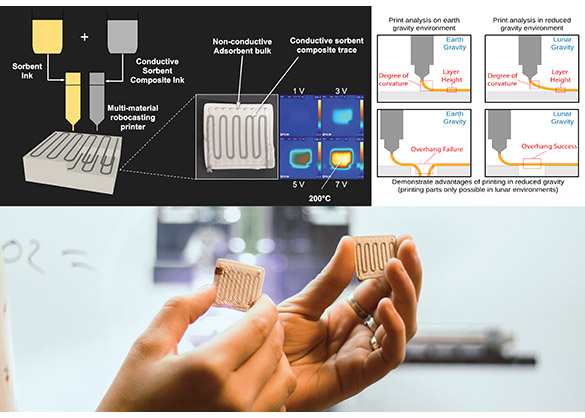Viability of in-situ Lunar Manufacturing of Life Support Systems using a Direct Writing Technique
PI: Gregory Whiting, University of Colorado - Boulder, Robert Street (Co-I), Palo Alto Research Center Incorporated
PI: Gregory Whiting, University of Colorado - Boulder, Robert Street (Co-I), Palo Alto Research Center Incorporated

- TA06 Human Health, Life Support and Habitation Systems
- TA07 Human Exploration Destination Systems
- TA12 Materials, Structures, Mechanical Systems and Manufacturing
Although the printing of thermoplastics and the basic syringe-based extrusion of single function inks have been demonstrated in microgravity environments, they are incompatible in most lunar in-situ resource utilization (ISRU) applications. In addition, neither technique can offer a wide library of printable functions. This experiment will assess effects of lunar gravity and microgravity on the direct-ink writing process using well-understood room-temperature inks. In a lunar gravity environment, it will explore the design rules for direct-ink writing and seek to demonstrate the ability to print simple components.
A successful demonstration will reveal printable geometries only achievable in both lunar and cislunar gravity. It will also establish a model to constrain objective-driven device designs.
• NASA lunar missions, including colonization
• Commercial and academic use of lunar and cislunar environments
• Lunar ISRU
Technology Details
-
Selection DateTechFlights19 (Oct 2019)
-
Program StatusCompleted
- 2 Parabolic
Development Team
-
PIGregory Whiting
-
PI Organization
-
Co-IRobert Street
-
Co-I Organization
-
SponsorNASA
-
More Information

